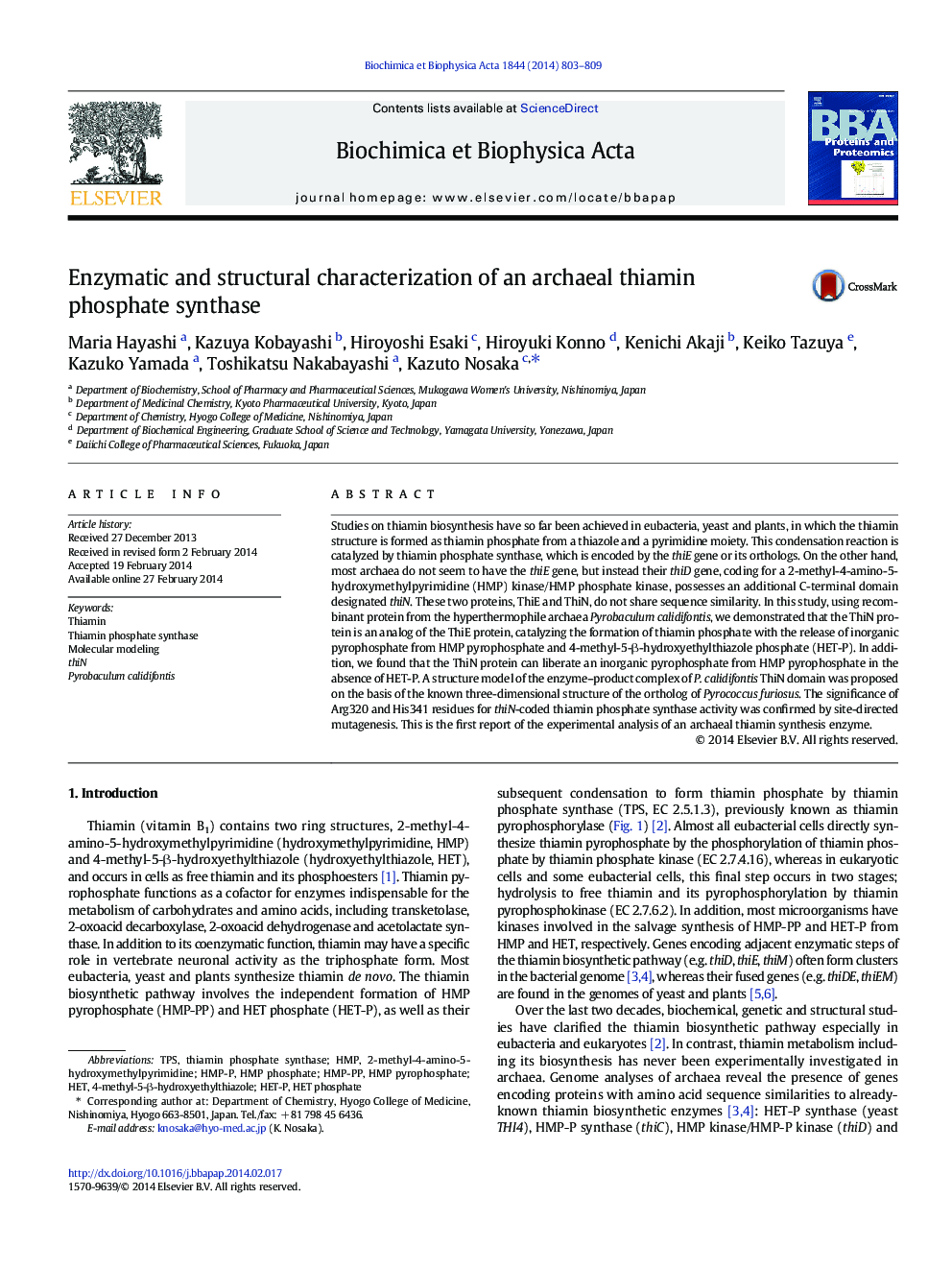| Article ID | Journal | Published Year | Pages | File Type |
|---|---|---|---|---|
| 10536919 | Biochimica et Biophysica Acta (BBA) - Proteins and Proteomics | 2014 | 7 Pages |
Abstract
Studies on thiamin biosynthesis have so far been achieved in eubacteria, yeast and plants, in which the thiamin structure is formed as thiamin phosphate from a thiazole and a pyrimidine moiety. This condensation reaction is catalyzed by thiamin phosphate synthase, which is encoded by the thiE gene or its orthologs. On the other hand, most archaea do not seem to have the thiE gene, but instead their thiD gene, coding for a 2-methyl-4-amino-5-hydroxymethylpyrimidine (HMP) kinase/HMP phosphate kinase, possesses an additional C-terminal domain designated thiN. These two proteins, ThiE and ThiN, do not share sequence similarity. In this study, using recombinant protein from the hyperthermophile archaea Pyrobaculum calidifontis, we demonstrated that the ThiN protein is an analog of the ThiE protein, catalyzing the formation of thiamin phosphate with the release of inorganic pyrophosphate from HMP pyrophosphate and 4-methyl-5-β-hydroxyethylthiazole phosphate (HET-P). In addition, we found that the ThiN protein can liberate an inorganic pyrophosphate from HMP pyrophosphate in the absence of HET-P. A structure model of the enzyme-product complex of P. calidifontis ThiN domain was proposed on the basis of the known three-dimensional structure of the ortholog of Pyrococcus furiosus. The significance of Arg320 and His341 residues for thiN-coded thiamin phosphate synthase activity was confirmed by site-directed mutagenesis. This is the first report of the experimental analysis of an archaeal thiamin synthesis enzyme.
Related Topics
Physical Sciences and Engineering
Chemistry
Analytical Chemistry
Authors
Maria Hayashi, Kazuya Kobayashi, Hiroyoshi Esaki, Hiroyuki Konno, Kenichi Akaji, Keiko Tazuya, Kazuko Yamada, Toshikatsu Nakabayashi, Kazuto Nosaka,
